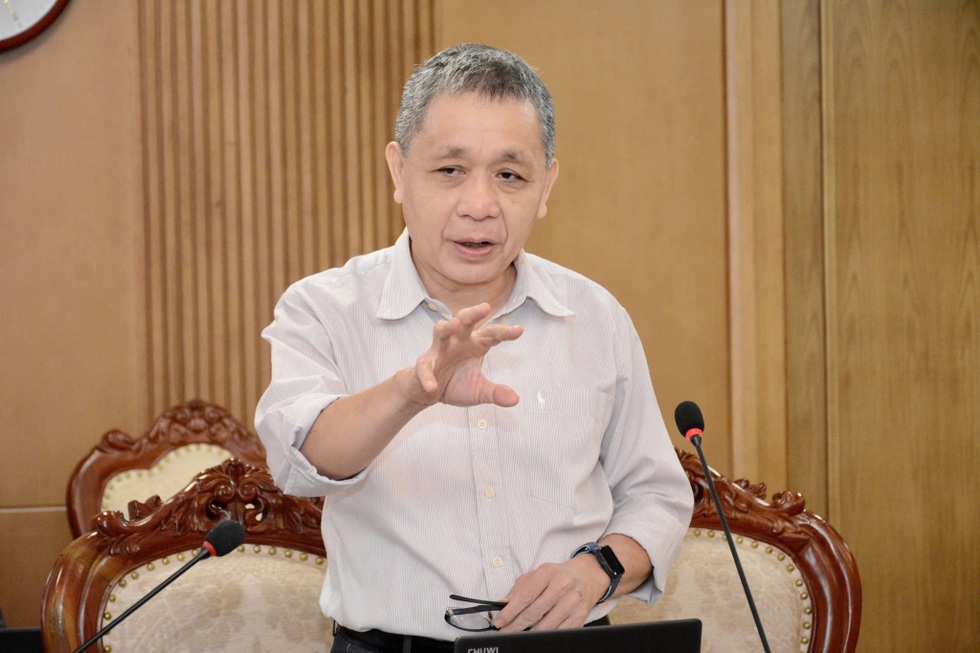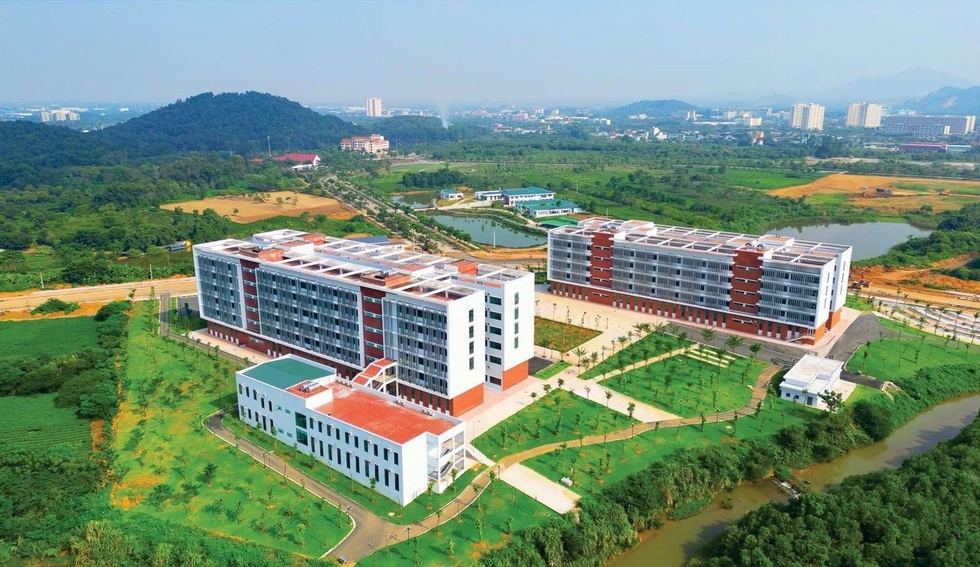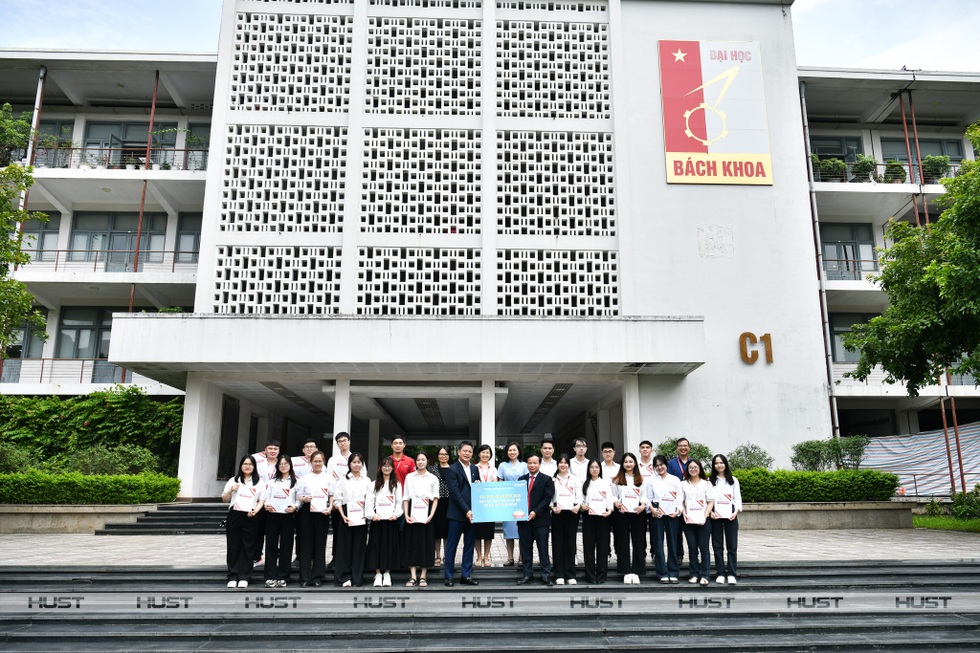The Politburo ’s order to reorganize and restructure higher education institutions, merge and dissolve substandard institutions poses many opportunities and challenges for the education sector. The implementation time is short and the specificity is high, so how to make the reorganization of universities truly become a unique opportunity for higher education to make a breakthrough is something that needs to be carefully calculated and considered.
Dr. Le Dong Phuong, former Director of the Center for Higher Education Research, Vietnam Institute of Educational Sciences, expressed his concerns and worries about this issue.
Many schools are weak but it is necessary to maintain them.
Sir, in the opinion of many experts, restructuring weak universities is necessary to improve educational efficiency. However, this may also increase access barriers for learners in rural and remote areas. What is your opinion?
- I have many questions at the moment, because the Ministry of Education and Training does not have a specific arrangement plan, criteria, and standards for mergers and dissolutions. But it seems that, based on initial information, the merger will depend on the effectiveness and efficiency of current higher education institutions. At the same time, educational institutions considered weak and ineffective will be subject to merger or dissolution.
From the perspective of economic management, it is appropriate to reorganize ineffective organizations. However, higher education institutions are not like businesses; they are a special form of organization, and they also carry out welfare missions and contribute to society. Therefore, to consider effectiveness or inefficiency, specific criteria are needed.

Dr. Le Dong Phuong, former Director of the Center for Higher Education Research, Vietnam Institute of Educational Sciences (Photo: Provided by the character).
If we look purely at the numbers of training scale, ability to attract students, training and research results, there are some universities that are really poor compared to the whole. Among them, it must be recognized that many schools in this group are located in remote areas, with low socio-economic conditions.
There have been many opinions that “schools like this should be disbanded”, but my opinion is the opposite. I think the existence of these schools is very necessary. Those educational institutions cannot develop because the socio-economic context in that area is not developed, the standard of living is low, the attraction of higher education, especially local higher education institutions, to the people is not high.
We have three difficult regions: the Northwest, the Central Highlands, and the Southwest, with many ethnic minority people. Universities here are generally weak. But we must frankly admit that these schools have made a significant contribution to the economic, social, and security development of the locality.
It is not wrong to say that weak schools should be disbanded, and students who want to study should go to the city. But we need to face the reality, most of the students in disadvantaged areas, once they go to big cities or economic centers to study, will not return to their hometowns. This is a brain drain from disadvantaged areas.
If these regional higher education institutions are eliminated or adjusted, the learning opportunities of students in the region will decrease and the risk of falling behind in these regions will increase. Inequality and social gaps will not only not narrow but will widen, and the consequences will take more effort to resolve.
Considering the economic problem as well as the training environment, will merging weak universities in underdeveloped areas into central universities create a stronger improvement in quality, sir?
- In some ways, such a merger may be economically efficient. When operating on a larger scale, unit costs will be cheaper, and the cost of training a university student may be reduced.
What I hope for and what I gain is that students will have the opportunity to study and enjoy new knowledge with more capable and qualified lecturers, and participate in more effective scientific activities... when merging schools in underdeveloped economic regions into central schools.




Hanoi National University Urban Area in Hoa Lac (Photo: VNU)
The upcoming university restructuring is expected to be implemented quickly. As a researcher on higher education, what are your thoughts?
- I have 3 concerns. Any arrangement and organization of the educational system must have clear bases and principles. Higher education is a part of the educational system, and the educational system always has a certain lag in changes. Therefore, changes in the higher education system will have quite long-term consequences or consequences.
It takes a generation of students 4-5 years to graduate, and another 4-5 years to adapt to professional life. A sudden change now can have an impact for the next 10-20 years.
I am also concerned about the 140 public universities mentioned in the merger. I wonder why there are only 140. This makes educational institutions worried and nervous about who will be kept the same and who will be reorganized. I am waiting for clearer information.
Another concern is that I heard that the merger will be implemented in the next 3 months. For such an important task, is it too urgent, and many questions may not be fully answered?
The challenge to be addressed in mergers is group thinking.
The reorganization and downsizing of universities will be accompanied by the elimination of intermediate levels, ensuring streamlined, unified, and effective administration. This also poses challenges to university administration. How do you evaluate the post-reorganization administration story?
- I think the biggest challenge with university governance is the story of organizational culture, the heavy group thinking that can lead to reactions within the organization. Whether group A schools can sit with group B schools, how to allocate resources, prioritize the better or the weaker... are the issues that need to be raised.
As for managing higher education institutions when 2-3 schools merge, with the current leadership capacity of universities, it is not difficult.



According to you, what should universities do to prepare for the upcoming arrangement and merger?
- Up to this point, we have no information about the method, criteria for arrangement, or specific roadmap, so it is difficult to make any comments. However, when changing the organizational structure of an education system, it takes time to communicate and enlighten the minds of those affected and other social groups.
At this time, the new school year has just begun, schools are implementing many activities, any impact at any time can affect the management of the system and of higher education institutions, the psychology of teachers and students.
I think the most important thing now is that the implementation roadmap needs to have the agreement of the relevant parties.
I am also interested in consulting with stakeholders, will schools be given input in developing the plan or will the plan be pre-built and schools just waiting to be merged or dissolved?
If you were given policy advice on this arrangement, what would you recommend?
- If I were asked for my opinion, I would suggest that there needs to be a convincing explanation as to why a merger or dissolution is necessary.
Compared to other countries, Vietnam does not have many universities. However, universities in Vietnam do not have their own identity, they are similar in terms of majors and training methods.
In 2024, the Ministry of Education and Training issued standards for higher education institutions, with an implementation deadline of 2030. At that time, schools complained that they only had 6 years to do it, so how could they meet the criteria set by the Ministry? However, in the near future, a large-scale policy of comprehensively arranging and restructuring universities will be carried out in a very short time, only a matter of months.
Therefore, state management agencies and affected units need to sit together to figure out the most suitable roadmap. Ministries, branches, and local authorities where universities are located also need to contribute their opinions and participate in formulating this policy. This is a huge policy change, not simply “a few universities sitting together”.
Higher education also needs a long-term implementation plan, including transition and completion stages, avoiding administrative coercion.
It’s as simple as how students are arranged in the new structure. They take the entrance exam to university A in locality Z, and now that the merger has taken place, after graduation they will receive a degree from university B in locality X; and what will happen to the land and facilities that have been assigned to the schools… All of these issues need to be clearly calculated to ensure legality, minimize conflicts and psychological, social and economic impacts.
Thank you for sharing this!
Part 1: University arrangement is an order and strategy for breakthrough
Part 2: University arrangements must ensure no interruption in students' studies
Part 3: University mergers: Ending the consequences of "hot" development, opportunities for private schools
Source: https://dantri.com.vn/giao-duc/sap-nhap-dai-hoc-se-giai-tan-tat-ca-cac-truong-yeu-kem-20250924210232213.htm


![[Photo] High-ranking delegation of the Russian State Duma visits President Ho Chi Minh's Mausoleum](https://vphoto.vietnam.vn/thumb/1200x675/vietnam/resource/IMAGE/2025/9/28/c6dfd505d79b460a93752e48882e8f7e)
![[Photo] Joy on the new Phong Chau bridge](https://vphoto.vietnam.vn/thumb/1200x675/vietnam/resource/IMAGE/2025/9/28/b00322b29c8043fbb8b6844fdd6c78ea)


![[Photo] The 4th meeting of the Inter-Parliamentary Cooperation Committee between the National Assembly of Vietnam and the State Duma of Russia](https://vphoto.vietnam.vn/thumb/1200x675/vietnam/resource/IMAGE/2025/9/28/9f9e84a38675449aa9c08b391e153183)



























































































Comment (0)